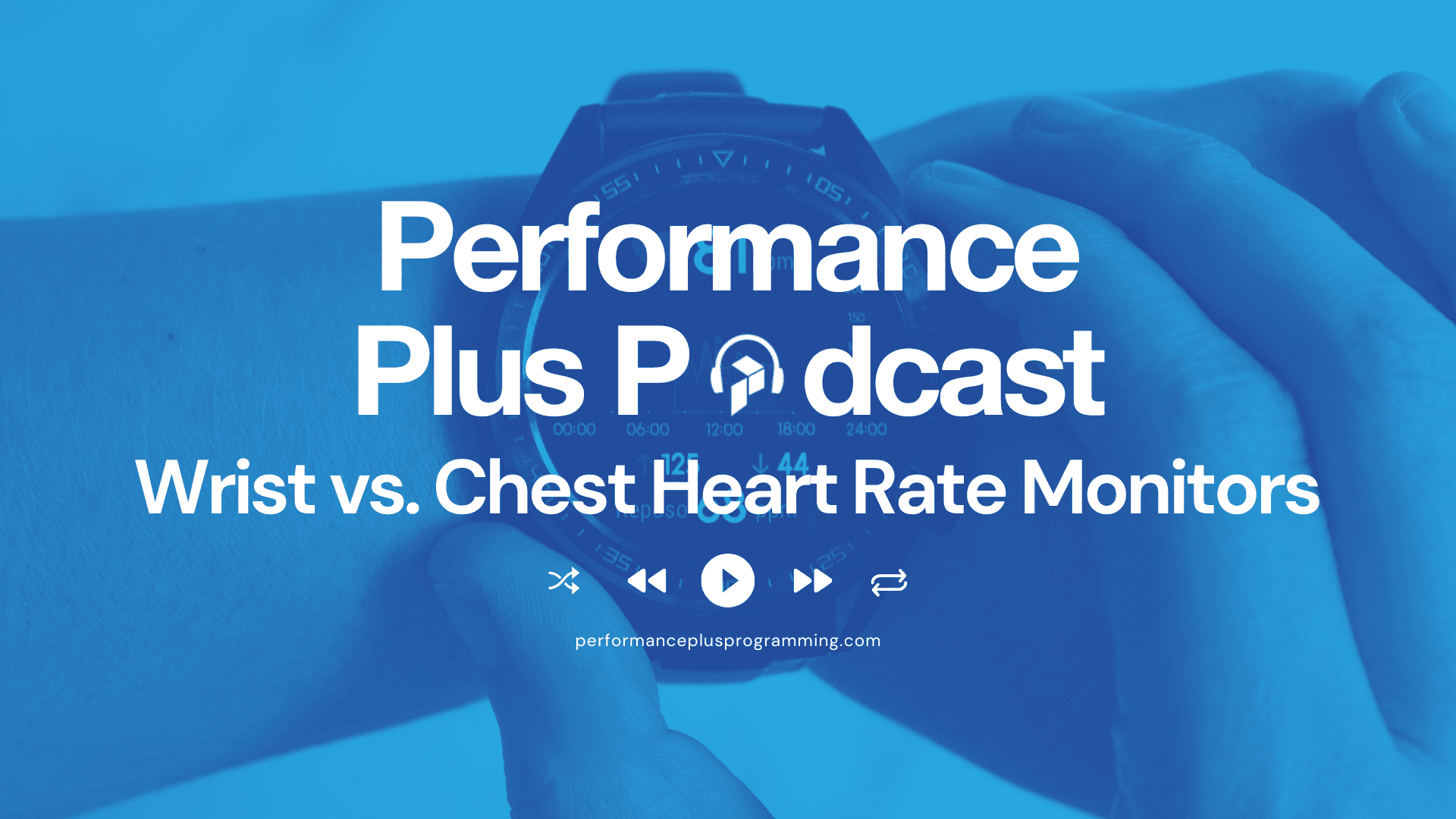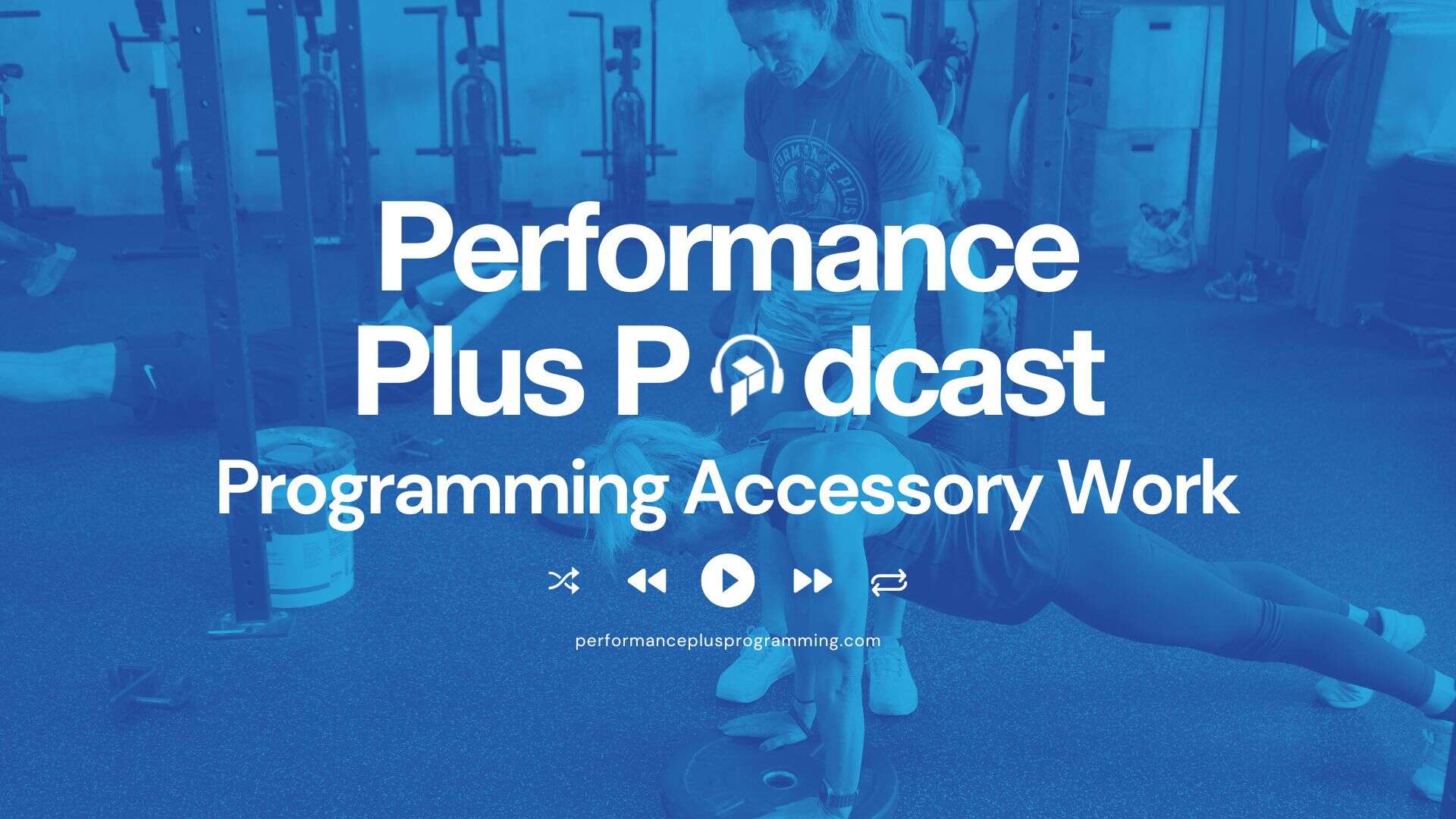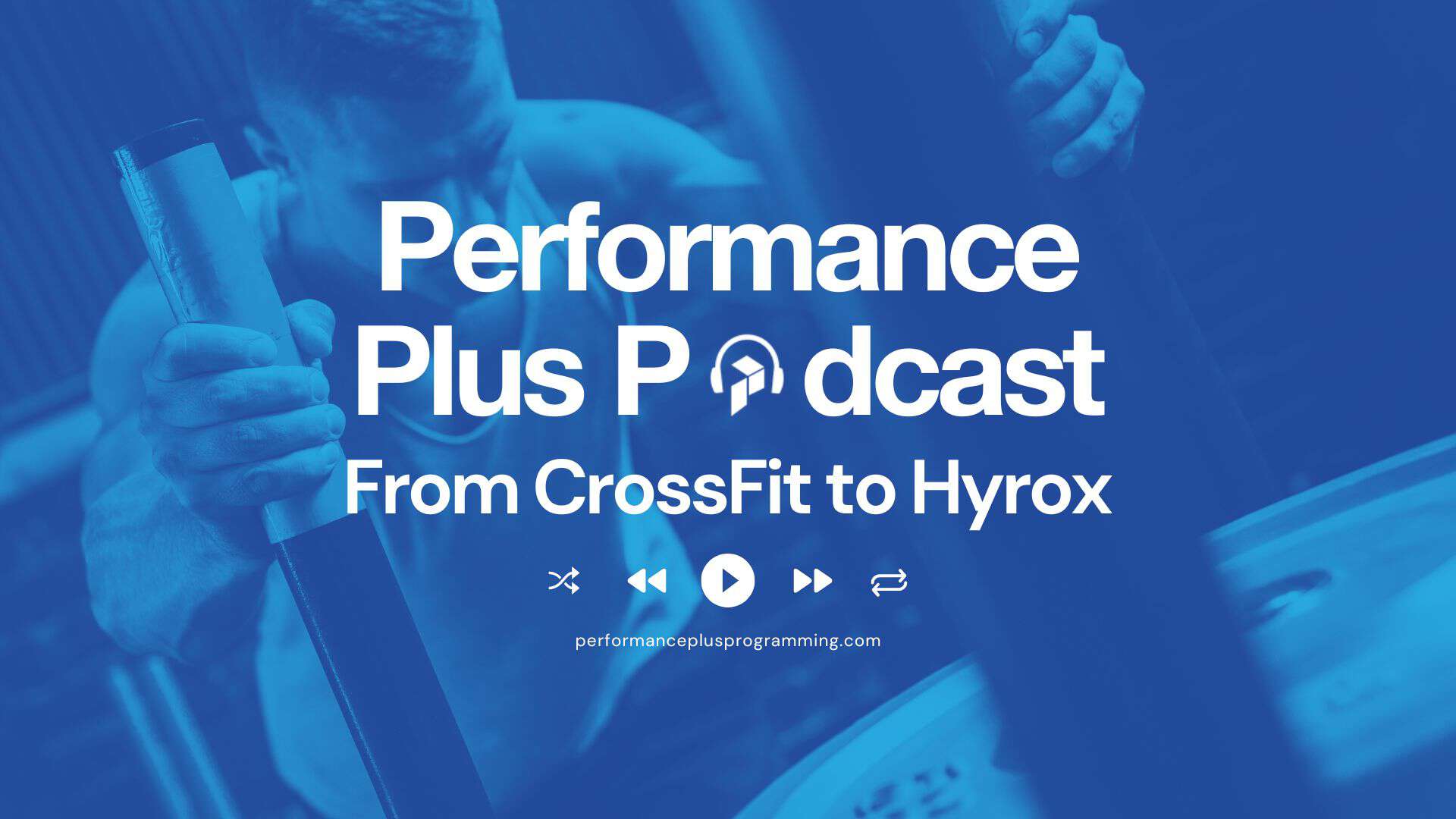
Wrist vs. Chest Heart Rate Monitors – Build Your Engine Episode 4

Wrist vs. Chest Heart Rate Monitors – Build Your Engine Episode 4
In this episode of the Performance Plus Programming Podcast, Zachary Long and Johnny discuss the importance of heart rate monitors in conditioning training, emphasizing the accuracy of chest straps over wrist-based monitors. They explore personal experiences with different devices, the impact of caffeine on performance, and the significance of tracking heart rate data for effective training. The conversation highlights the need for precise monitoring to achieve desired physiological changes during workouts.
Download the Build Your Engine eBook here!
Episodes
- Rethinking Conditioning
- How Energy Systems Drive Performance
- Accessory Conditioning WODs You Need to Train
- Wrist vs. Chest Heart Rate Monitors
Wrist vs. Chest Heart Rate Monitors Takeaways
- Heart rate monitors are essential for understanding physiological responses.
- Chest straps provide more accurate heart rate data than wrist monitors.
- Using heart rate data can help optimize conditioning training.
- Caffeine intake can significantly affect workout performance.
- Tracking wattage can be an alternative to heart rate monitoring.
- Placement of wrist monitors is crucial for accurate readings.
- Personal experiences with heart rate monitors can vary widely.
- Understanding energy systems is key for effective training.
- CrossFit athletes can benefit from heart rate monitoring during Metcons.
- Age can influence caffeine sensitivity and workout intensity.
Chapters
- 00:00 Introduction to Heart Rate Monitors
- 03:12 The Accuracy of Heart Rate Monitoring Devices
- 05:56 Training Insights and Personal Experiences
- 09:10 Caffeine and Performance Impact
Wrist vs. Chest Heart Rate Monitors Podcast Summary
Heart rate monitors have become increasingly popular in fitness, especially for CrossFit athletes aiming to enhance conditioning. However, when it comes to accuracy, not all heart rate monitors are created equal. In this episode of the *Performance Plus Podcast*, Zach Long and Johnny B dive into the differences between wrist-based and chest-based heart rate monitors, explaining which option is better for serious training.
Why Heart Rate Monitoring Matters
Tracking your heart rate during workouts is crucial for conditioning programs that focus on energy system development. Heart rate data helps athletes gauge intensity levels, ensuring they stay within specific training zones. Monitoring heart rate can help athletes fine-tune workouts, improve efficiency, and prevent overtraining.
Wrist-Based Heart Rate Monitors
Wrist-based heart rate monitors, found in popular devices like Whoop, Apple Watch, and Garmin watches, use optical sensors to measure blood flow. While these are convenient and useful for general activity tracking, they have significant limitations in intense training scenarios.
- Pros
- Convenience: Easy to wear and integrate with fitness watches.
- 24/7 tracking: Good for measuring overall strain, daily steps, and sleep patterns.
- Cons
- Accuracy Issues: Optical sensors can struggle with rapid changes in heart rate, especially during high-intensity training.
- Movement Interference: Arm movements during exercises like running or rowing can disrupt readings, mistaking cadence for heart rate.
- Position Sensitivity: Proper wrist placement is critical, and even slight shifts can lead to inaccurate data.
Chest Strap Heart Rate Monitors
Chest strap heart rate monitors use electrodes to measure electrical signals from the heart, providing more precise and reliable readings. These are often considered the gold standard in heart rate monitoring.
- Pros
- High Accuracy: Provides more reliable data during both low- and high-intensity workouts.
- Real-Time Feedback: Accurate readings allow for better zone training and conditioning adaptations.
- Affordable Options: Models from brands like Polar and Garmin are available for under $50, making them accessible for most athletes.
- Cons
- Less Comfortable: Wearing a chest strap can be less comfortable compared to wrist-based devices.
- Limited Functionality: Primarily focused on heart rate tracking and does not offer features like daily activity monitoring.
Why Chest Straps Are Better for Training
Johnny emphasizes that chest straps are the preferred choice for athletes focusing on conditioning. During high-intensity sessions, wrist-based monitors can misreport heart rate zones, which impacts training effectiveness. For example, a wrist monitor might display Zone 3 heart rate when an athlete is actually pushing Zone 4. This difference can mean missing out on intended adaptations.
How to Use Heart Rate Monitors in Your Training
- For General Fitness Tracking
- Wrist-based monitors are suitable for daily wear, offering insights into general fitness, recovery, and strain.
- For Conditioning Workouts
- Use a chest strap to accurately monitor heart rate zones. This is particularly important for interval training, zone-specific work, and steady-state cardio.
- Combining Heart Rate with Wattage
- In the Performance Plus conditioning programs, wattage is often used to guide intensity. This eliminates reliance solely on heart rate data, which can fluctuate due to factors like caffeine intake, stress, or temperature. Pairing wattage data with a chest strap can enhance accuracy and effectiveness in training.
Final Thoughts: Which One Should You Choose?
Wrist vs. Chest Heart Rate Monitors. While wrist-based monitors have their place in general fitness tracking, chest straps are the superior choice for serious training and conditioning. If you’re working on energy systems, aim to get a chest strap to ensure you’re training in the correct heart rate zones.
For CrossFit athletes and endurance enthusiasts, incorporating chest strap monitoring can be a game-changer, delivering more precise data that leads to better performance. For more guidance on heart rate-based conditioning, check out the “Build Your Engine” programs!





